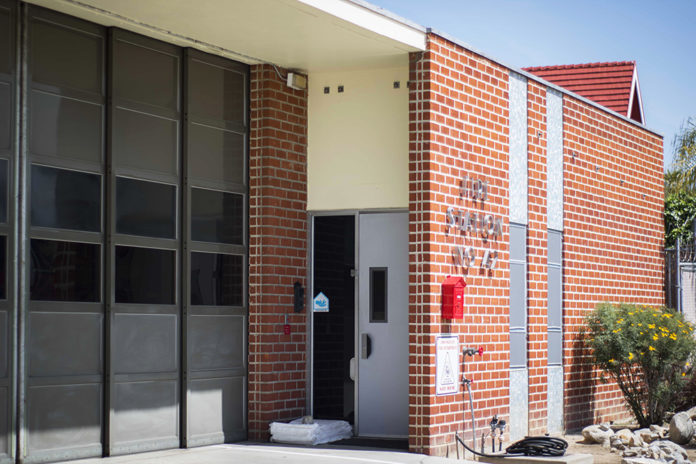
As the weather gets warmer and California gets drier, people expect more fires. However, firefighters and community organizations acknowledge that multiple factors such as climate change, trade winds and rain can have a significant effect on the pattern of fire. Because of this unpredictable pattern, preventative work and training never stops in fire stations as firefighters are the first line of defense when disasters strike.
According to David Barrett, the chief executive of MySafe:LA, the two most common type of fires are brush fires (also known as wildfires) and structural fires. MySafe:LA is an LA-based charity that educates communities around California about fire safety. Barrett said structural fires tend to be less time-specific and have less to do with weather patterns than brush fires. He added that they happen year-round and occur more often around times of colder weather, when people use heating appliances more, which can pose fire risks. Barrett also said structural fires can happen more frequently during periods of economic contraction, when the generally poorer population is less able to care for and maintain their houses. In order to reduce the risk of structural fires, one of the main initiatives MySafe:LA conducts is installing free smoke detectors in homes without them. Beyond installing detectors for households, Barrett said MySafe:LA also educates young students about fire safety.
“One of our very important initiatives is that we teach fourth- and fifth-grade students to inspect their homes for working smoke alarms and CO detectors and other kinds of fire risks. They actually take that home as homework. And we reward them either with free smoke alarms, and if they graduate, most of them do, 90 percent, they get junior fire badges.” Barrett said.
On the other hand, brush fires are heavily influenced by weather conditions such as seasonal winds. Lafayette Carter, the fire captain of Fire Station #42, the closest fire station to Occidental, said that in recent years there have been more fires in the winter months. When fire risk is increased, the National Weather Service issues red flag warnings.
“We always mention the summer, right? But in September when we have a lot of red flag days, that’s probably some of our highest risk times: September and October,” Carter said.
Edward Scantlebury, an engineer and fire engine driver based at Station #42, agrees with Carter and adds that weather phenomenon, such as inland winds, can both increase or decrease fire risk depending on the moisture in the winds.

“It’s because of the offshore winds. It’s the Santa Ana wind,” Scantlebury said. “That’s what we get this year. The wind’s not coming from the ocean. If they’re coming off the ocean, [it’s] nice and cool, moist air. But when it blows the other way, it dries everything out, our humidity drops very low, and we have the wind, that’s where it gets really hazardous.”
Scantlebury said that higher fire risks later in the year are possibly due to climate change, which causes weather patterns to emerge in unexpected times of the year. Previously, the Santa Ana winds tended to come in the fall, but they have now shifted to a later timeframe in the last quarter of the year.
In order to reduce brush fires risks, a standard procedure called brush clearance is conducted every year from April to September, where firefighters check the height of brush outside homes that are located near flammable forests. Scantlebury said Station #42’s brush clearance inspection area includes houses near the Ventura Freeway. According to Carter, the requirement is to trim brush below two inches and to keep at least 200 feet of clearance between a house and brush. In the case where brush is not trimmed to the required level, a warning will be issued and the firefighters will come back to the same house to check again at a later time. If the brush is still higher than two inches at the second visit, Scantlebury said a large fine will be imposed based on the size of the household and its type.
Carter estimated that about 20 percent of households do not meet the brush clearance standards upon first inspection, but said all homes eventually meet the required height.
Bennett Wong, a firefighter in Station #42, said the station feels like his home away from home.
“When we come to work every day, it’s here for 24 hours. This is home away from home. We sleep here, we eat here, we exercise, we have a laundry machine. It’s not like the city provides it but we do,” Wong said. “This is our family, and we depend on each other. I depend on him [Carter] with my life and vice versa.”
![]()



































